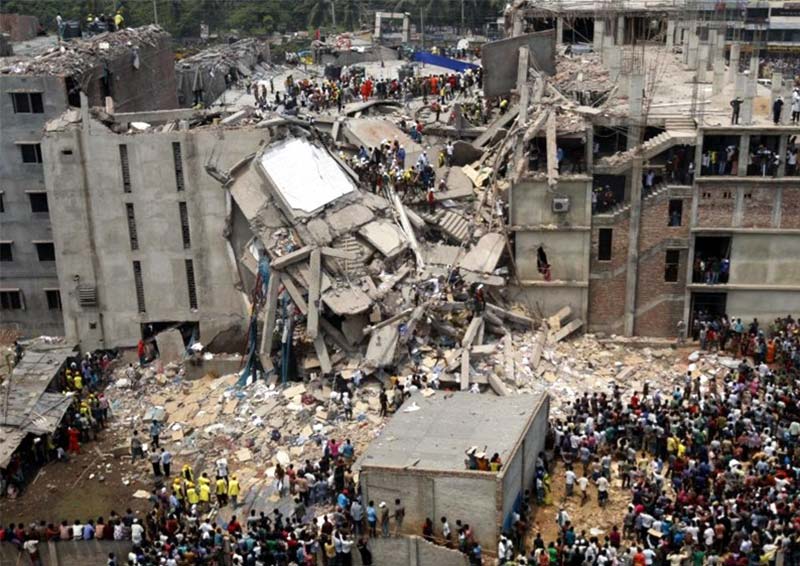Forensic engineering in developing countries
Contents |
[edit] Introduction
Civil engineers generally take a cautious approach when constructing complex systems, as any mistakes or misunderstandings of the physical world can lead to disastrous consequences, such as catastrophic failure of a building or structure. When tragic incidents like this occur, they are a lesson to be learned and passed on to others so the profession can avoid repetition of a similar disaster in the future.
It is important, then, to evolve scientific methods for investigating the causes of disasters – or other failures to perform. This branch of engineering is called 'forensic engineering'.
[edit] Looking for flaws in the system
Failures and disasters are often attributed to mistakes or deviations from the normal, committed by individuals, or to the unpredictability of the physical world (nature) itself.
Forensic engineering takes a different approach – looking at failures or disasters as a consequence of a flaw in the system of professional practice rather than as an isolated incident which could have been easily avoided. The Institution of Civil Engineers (ICE) has been advocating this approach through its journal Forensic Engineering.
[edit] A new field for developing countries
The systems of professional practice of both engineering and law are considerably different in developed and developing countries. While the practice and education of forensic engineering has progressed considerably in the developed world, it is still practically unknown in the developing world.
There is also a great deal more building taking place in developing countries and this, coupled with lack of resources means that structures and works are often more at risk of failure. All this makes it important to develop forensic engineering to suit the professional environment in these countries. As a first step, Forensic Engineering journal's editorial panel have published a themed issue featuring four full-length papers.
[edit] Increased risk in urban areas
In the first paper, 'Learning from experience to avoid collapse', Alastair Soane (2016), director for structural safety at the Institution of Structural Engineers in London, advocates that the basic principles of forensic engineering can be learnt by people in developing countries from their peers in developed countries who have gone through the learning process.
He draws attention to the fact that increased urbanisation of developing countries could lead to an increase in disasters and that there is an urgent need to take proactive steps to mitigate the risk of failures.
In the paper on 'Rapid structural assessment of garment factories in Bangladesh', Hodgson et al. (2016) give details of the assessment made on over 200 factories in the aftermath of a collapsed factory building. This paper highlights issues related to documentation and quality control which are found wanting and the consequent risks in buildings which are in use.
[edit] Identifying causes of collapse
The paper on 'Lessons from structural failures in India' by Satish Kumar (2016) first highlights the typical state of affairs in the construction industry in most countries and discusses aspects of education, professional practice, legal frameworks and implementation needed to improve the situation.
It then goes on to give several case studies where partial or total collapse occurred during or after construction. The causes of the collapses are identified and the paper tries to find systemic and policy solutions by which they can be avoided in the future.
Adding an entirely different dimension to forensic engineering is the paper by Gunn et al. (2016) on 'Aged embankment imaging and assessment using surface waves'. The development of this technique is crucial to prevent failure of old earthwork infrastructure under extreme weather conditions.
Finally, Professor Sivakumar Babu (2016) gives a briefing on forensic geotechnical engineering, outlining the steps to identify the cause of failure and how to take preventive measures.
This article was originally published here by ICE on 14 Dec 2016. It was written by Harshavardhan Subbarao.
--The Institution of Civil Engineers
[edit] Related articles on Designing Buildings Wiki
Featured articles and news
The Building Safety Forum at the Installershow 2025
With speakers confirmed for 24 June as part of Building Safety Week.
The UK’s largest air pollution campaign.
Future Homes Standard, now includes solar, but what else?
Will the new standard, due to in the Autumn, go far enough in terms of performance ?
BSRIA Briefing: Cleaner Air, Better tomorrow
A look back at issues relating to inside and outside air quality, discussed during the BSRIA briefing in 2023.
Restoring Abbotsford's hothouse
Bringing the writer Walter Scott's garden to life.
Reflections on the spending review with CIAT.
Retired firefighter cycles world to raise Grenfell funds
Leaving on 14 June 2025 Stephen will raise money for youth and schools through the Grenfell Foundation.
Key points for construction at a glance with industry reactions.
Functionality, visibility and sustainability
The simpler approach to specification.
Architects, architecture, buildings, and inspiration in film
The close ties between makers and the movies, with our long list of suggested viewing.
SELECT three-point plan for action issued to MSPs
Call for Scottish regulation, green skills and recognition of electrotechnical industry as part of a manifesto for Scottish Parliamentary elections.
UCEM becomes the University of the Built Environment
Major milestone in its 106-year history, follows recent merger with London School of Architecture (LSE).
Professional practical experience for Architects in training
The long process to transform the nature of education and professional practical experience in the Architecture profession following recent reports.
A people-first approach to retrofit
Moving away from the destructive paradigm of fabric-first.
International Electrician Day, 10 June 2025
Celebrating the role of electrical engineers from André-Marie Amperè, today and for the future.
New guide for clients launched at Houses of Parliament
'There has never been a more important time for clients to step up and ...ask the right questions'
The impact of recycled slate tiles
Innovation across the decades.
EPC changes for existing buildings
Changes and their context as the new RdSAP methodology comes into use from 15 June.


























